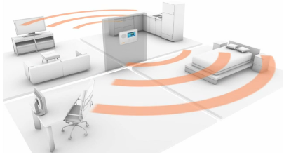In the last year or so, there has been a lot of buzz surrounding smart homes and home automation as solutions to energy efficiency. The 2013 Consumer Electronics show was full to the brim with new smart energy options. Among the most talked about were the Nest thermostat, which remembers your heating and cooling habits, and a wifi-enabled fridge by Samsung that will allow you to create paper-free shopping lists and send them to yourself on your smartphone. But what is such technology actually doing for the environment? Is home automation helping us to reduce our carbon footprint, or is it all just techie buzz words and expensive extravagances to help us feel better?
Total Home Automation
Among the latest green options for the home, as well as the Nest and Samsung’s fridge, there are a multitude of energy monitors, programmable thermostats, smart power strips, solar panels, wind turbines, and automated lighting controls. If you want to, you can control every aspect of your house using home automation. The newest technology even lets you use your iphone or other device to control everything from wherever you like. This no doubt makes life easier for you, but what is the actual impact on the environment?
A quick look at eia.gov will tell you just how much energy the United States uses every month. A quick look at your utility bill will tell you just how much of it you are contributing. But what most of us don’t realize is just how much of that total usage is completely unnecessary. Most obvious is the energy wasted on heating and cooling when we are either sleeping or absent from our houses. Programmable thermostats or energy monitors can help cut down on this, by allowing you to program them to change automatically, or even control them using your phone. The same sort of technology is available for lighting, or you can install motion detectors in each room. Energy “vampires” are appliances that remain plugged in, “sucking” energy even when they are not in use. These can be avoided by using smart power strips that will detect vampires and cut power to them. Solar or wind power can help you to actually produce your own energy at home.
The Future
Most of today’s energy problems have developed out of society’s reliance on technology. So although it might seem backwards to look to technology for he answer, maybe that is exactly the right place to look. If inefficient technology is the cause for most of our energy excess, surely efficient technology is the way to go. You can visit epa.gov to find out more about ways you can incorporate smart energy technology into your home, and enegystar.gov has a list of appliances that have been approved as the most energy efficient on the market.
- Making your new home energy efficient before moving out of your current home
- 4 Simple Ideas to Save Energy At Home
Technology is not going to stop being a part of our lives, in fact as new concepts are being explored everyday, it seems more and more apparent that it is going to become an even bigger part of our lives. This leaves it up to us to choose whether we are going to use energy efficient technology or the alternative. So is smart home tech the answer? It might just be.





